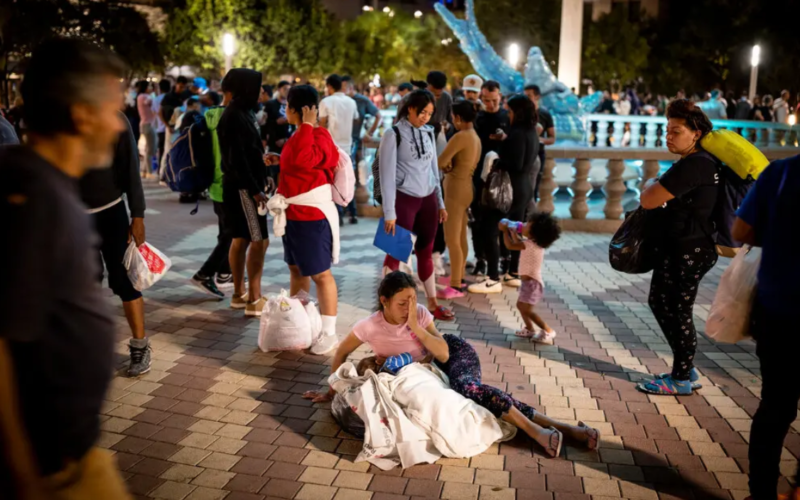El Paso, known for its welcoming embrace of newcomers, is confronting a significant challenge as an influx of migrants arrives in the city with limited options for shelter and support.
El Paso’s reputation as a compassionate and inclusive community has drawn migrants from various regions seeking a better life. However, the city’s capacity to provide essential services such as housing, medical care, and legal assistance is being tested as the number of migrants in need continues to rise. Local organizations and volunteers are working tirelessly to assist these newcomers, but the scale of the challenge is daunting.
The usual shelters are at full capacity, as are the numerous hotel rooms secured by the city to accommodate migrants. Over the weekend, a newly established city-operated shelter, located in a recreational center, quickly reached its capacity of approximately 400 beds. Another shelter is in the planning stages and will be set up in an unused middle school.
Mayor Oscar Leeser announced over the weekend that the city had reached a critical juncture and could no longer manage the migrant situation on its own. He expressed gratitude for the buses chartered by Governor Greg Abbott’s administration in Texas, which have resumed transporting hundreds of migrants out of El Paso to destinations like Denver, Chicago, or New York. The mayor also revealed his pursuit of additional financial aid, amounting to millions of dollars, from the Biden administration.
Historically, many migrants arrived at the border with a specific destination in mind, often due to family or other connections within the United States. However, this pattern is beginning to shift.
Melissa M. Lopez, the Executive Director of Diocesan Migrant and Refugee Services in El Paso, an organization providing legal assistance to migrants, remarked, “They’re arriving here with no idea where to go and with no resources to get them anywhere else.”
Consequently, migrants have resorted to sleeping on El Paso’s sidewalks, particularly in proximity to overcrowded shelters located some distance from the downtown core. Residents of neighborhoods unaccustomed to encountering migrants have reported sudden encounters with unfamiliar individuals, many of whom carry plastic bags filled with meager belongings, near hotels where the city has managed to secure accommodations for them.
In San Jacinto Plaza, situated in the heart of the city, numerous men can be observed lounging on benches or engaged in conversations near prominent tourist hotels during the weekdays—a notable shift from previous surges, when migrants predominantly remained close to shelters. Notably, El Paso residents were conspicuously absent from the plaza during these encounters.
El Paso’s experience reflects a broader global issue as migration patterns continue to evolve. It highlights the need for collaboration between local, national, and international entities to ensure that migrants are provided with safe and humane conditions while also easing the burden on host cities.
In conclusion, El Paso’s commitment to being a welcoming city is being put to the test as it faces the strain of accommodating an increasing number of migrants. This situation calls for a multifaceted approach that not only addresses the immediate needs of migrants but also addresses the underlying causes of migration to create a more sustainable and equitable future for all.








